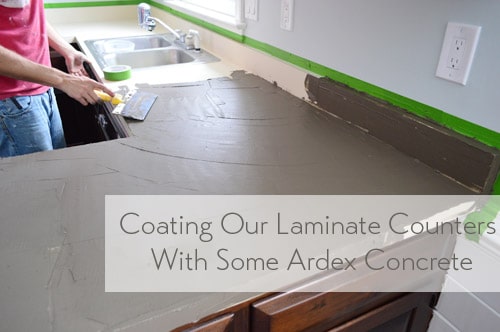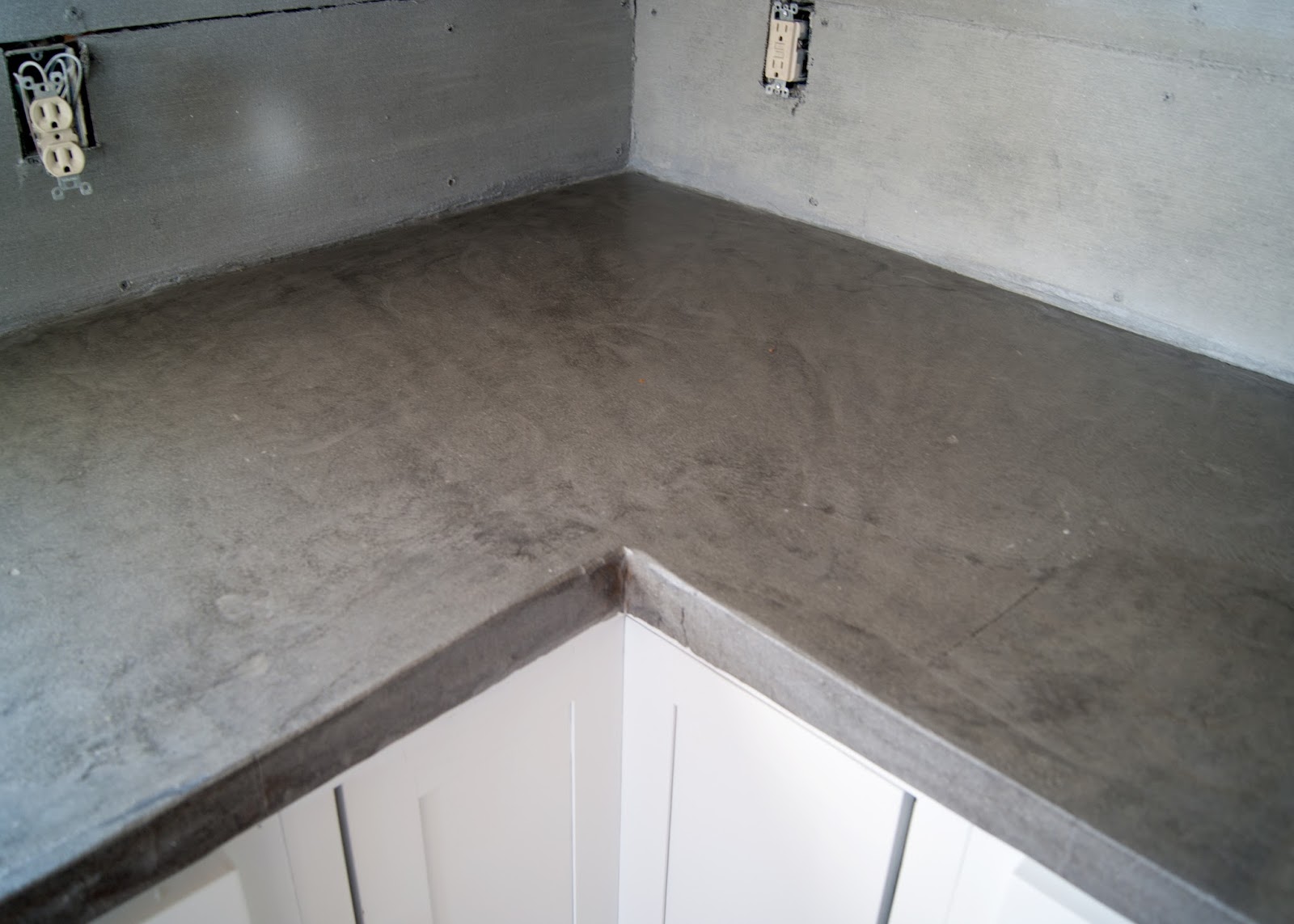Covering laminate countertops with concrete has emerged as a creative and cost-effective way to transform the look of a kitchen. This DIY approach allows homeowners to achieve the appearance of concrete countertops without the need for a complete replacement. The process involves applying a concrete overlay directly onto the existing laminate surface, providing a durable and customizable finish. Before embarking on this project, homeowners need to understand the steps involved, potential challenges, and the benefits of covering laminate countertops with concrete.
The first step in covering laminate countertops with concrete is thorough surface preparation. The laminate must be cleaned, sanded, and primed to create a suitable base for the concrete overlay. Proper preparation ensures better adhesion and a smoother, more professional-looking finish. Homeowners should pay attention to any imperfections or damage on the laminate surface, addressing them before proceeding with the concrete application.
Choosing the right concrete overlay is a crucial decision in this process. Overlays come in various formulations, each offering different textures, colors, and finishes. Some overlays are designed to mimic the appearance of natural stone or provide a sleek, modern look. Homeowners should consider their design preferences and the overall aesthetic of their kitchen when selecting a concrete overlay for their laminate countertops.
The application process involves mixing the concrete overlay according to the manufacturer’s instructions and spreading it evenly over the prepared laminate surface. Tools such as trowels or putty knives are commonly used to achieve a smooth and consistent application. It’s essential to work efficiently, as the overlay may start to set relatively quickly. Homeowners may choose to incorporate decorative elements during this stage, such as embedded stones or textures, to add a personalized touch to the countertops.

Once the concrete overlay is applied, the curing process begins. This typically involves allowing the concrete to dry and cure for a specified period. Homeowners should follow the manufacturer’s recommendations regarding curing time, as this ensures the overlay reaches its maximum strength and durability. During this stage, it’s crucial to protect the countertops from any potential damage or disturbance.
Sealing the concrete overlay is a critical step in ensuring the longevity and resilience of the covered laminate countertops. Sealing not only enhances the appearance of the concrete but also protects against stains, moisture, and daily wear and tear. Homeowners can choose from various sealant options, including matte or glossy finishes, depending on their desired look.
While covering laminate countertops with concrete offers a budget-friendly alternative to complete replacement, there are challenges to consider. Achieving a professional-looking finish requires skill and attention to detail. Homeowners who are less experienced in DIY projects may find it beneficial to seek guidance from online tutorials, home improvement forums, or even consult with professionals for advice.

Durability is a significant advantage of covering laminate countertops with concrete. Once properly sealed, the concrete overlay provides a robust and resilient surface that can withstand the demands of a busy kitchen. However, homeowners should be mindful of potential issues such as chipping or cracking over time. Taking precautions, such as using cutting boards and avoiding heavy impacts, can help maintain the integrity of the concrete surface.
Customization is a key benefit of this DIY project. Homeowners have the flexibility to choose the color, texture, and finish that best suits their kitchen design. The ability to incorporate personal touches, such as unique patterns or embedded elements, allows for a truly customized and one-of-a-kind countertop.
Maintenance of concrete-covered laminate countertops is generally straightforward. Regular cleaning with mild soap and water is usually sufficient to keep the surface looking fresh. However, it’s crucial to use non-abrasive cleaners to avoid damaging the sealant. Additionally, resealing the countertops at regular intervals, as recommended by the sealant manufacturer, is essential for preserving the concrete overlay.
The cost-effectiveness of covering laminate countertops with concrete is a significant factor that attracts homeowners to this DIY project. Compared to the expense of replacing countertops entirely, applying a concrete overlay provides a more budget-friendly option. The cost savings, coupled with the ability to achieve a modern and on-trend aesthetic, make this project appealing to those looking for a kitchen makeover without a hefty price tag.
Covering laminate countertops with concrete is a DIY project that allows homeowners to achieve the look of concrete without the cost and hassle of complete replacement. The process involves thorough surface preparation, careful application of the concrete overlay, and proper sealing for durability. While challenges exist, such as achieving a professional finish, the benefits of customization, durability, and cost-effectiveness make this project an attractive option for those seeking a creative and budget-friendly kitchen upgrade.
DIY Concrete Counters OVER Old Laminate

Initially you must figure out what type of laminate sheet you will choose for your countertop. When this is done, you have to clean it off with a dry cloth. If your spending budget will be the major limiting factor in what countertop you choose, you might want to give some thought to laminate countertops. Always choose stain free laminate countertops.
Concrete Countertop DIY – A Beautiful Mess
DIY Concrete Counters Poured over Laminate Concrete countertops

DIY Concrete Countertop Over Existing Formica Hymns and Verses

Concrete Countertop DIY – A Beautiful Mess
DIY Concrete Counters Poured over Laminate Averie Lane: DIY

Related articles:
- Painting Kitchen Laminate Countertops
- Quartz Laminate Countertops
- Laminate Countertops Installation
- Laminate Countertop For Kitchen Island
- Kitchen Island Laminate Countertops
- Cheap Laminate Countertops
- Laminate Countertops That Look Like Stone
- Plastic Laminate Countertops
- Laminate Countertop Ideas For Kitchen
- Dark Green Laminate Countertops